Shahnameh
Ferdowsi's Shahnameh, also known as the Book of Kings, is a monumental piece of Persian literature, written in the late 10th and early 11th century. It chronicles the history of Persia from creation to the Islamic conquest, blending myth, history, and folk tales in around 50,000 couplets. The Shahnameh is celebrated for its literary grandeur and its preservation of pre-Islamic Persian culture and language.
شاهنامه فردوسی، که به عنوان کتاب پادشاهان نیز شناخته میشود، یک اثر عظیم ادبیات فارسی است که در دههٔ پایانی قرن دهم و اوایل قرن یازدهم نوشته شده است. این کتاب تاریخ پارس از آفرینش تا فتح اسلامی را در حدود ۵۰٬۰۰۰ بیت شامل میشود و در آن افسانهها، تاریخ و قصههای مردمی با یکدیگر ترکیب شدهاند. شاهنامه به خاطر بزرگنمایی ادبی و حفظ فرهنگ و زبان پیش از اسلامی پارس مورد تجلیل قرار میگیرد.
We have translated Shahnameh by Ferdowsi, line by line to English. Each line of the poem is presented with its translation below it
به نام خداوند جان و خرد
کز این برتر اندیشه بر نگذرد
In the name of God, the Lord of Life and Wisdom,
Let not this noble thought be passed overThe object of this work is to translate all the poems of Ferdowsi , line by line so that the young generation of Persians unable to read the original Farsi can read them and encourage them to learn Farsi.
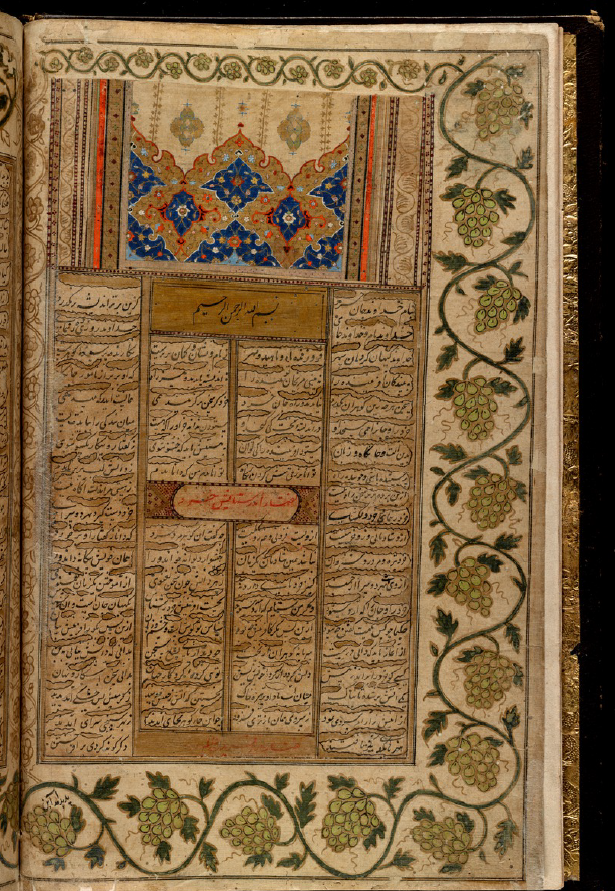
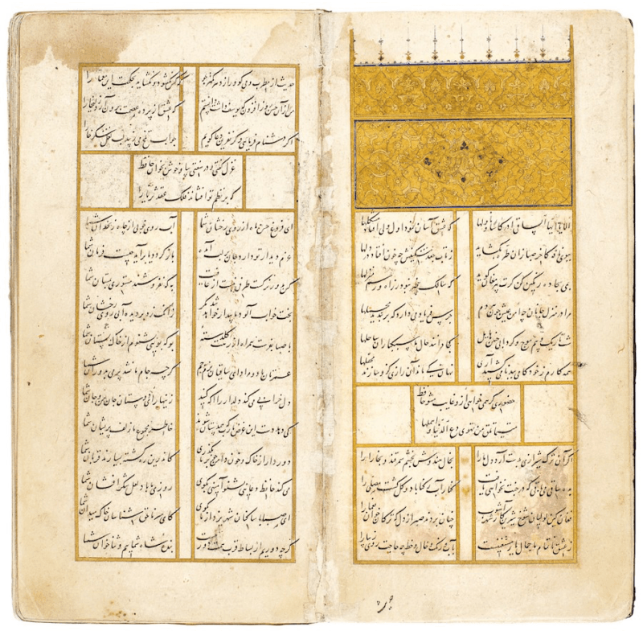
Divan Hafez
Divan Hafez is a renowned collection of lyric poetry that stands as a cornerstone of Persian literature. Penned by the 14th-century poet, Khwaja Shams-ud-Din Muhammad Hafez-e Shirazi, commonly known as Hafez, the Divan comprises around 500 ghazals, celebrated for their beauty, expressive depth, and complex layers of meaning. The poems delve into themes of love, spirituality, and the mysteries of human existence, often using symbolic and metaphorical language. Hafez's Divan is revered for its profound wisdom and sublime artistry, profoundly influencing Persian literature and culture.
دیوان حافظ یک مجموعه بزرگ از شعرهای لیریک است که به عنوان سنگ بنای ادبیات فارسی شناخته میشود. این دیوان توسط شاعر قرن چهاردهم، خواجه شمسالدین محمد حافظ شیرازی، معروف به حافظ، نوشته شده است و شامل حدود ۵۰۰ غزل است که به خاطر زیبایی، عمق ابرازی و لایههای پیچیده معناییاش مشهورند. در این شعرها، به موضوعاتی مانند عشق، معنویت و رموز و رازهای وجود انسانی پرداخته شده است و اغلب از زبان نمادین و استعاری استفاده میکنند. دیوان حافظ به خاطر حکمت عمیق و هنر الهی و بالغ خود، بر ادبیات و فرهنگ فارسی تأثیر عمیقی داشته است و مورد تجلیل و احترام بسیاری قرار گرفته است.
Each line of the poem is presented with its translation below it
الا یا ایها الساقی ادر کأسا و ناولها
که عشق آسان نمود اول ولی افتاد مشکلها
Oh, dearest cupbearer pour the wine and pass it round
For love seemed easy at first, but then difficulties were found
The object of this work is to translate all the poems of Hafez, line by line so that the young generation of Persians unable to read the original Farsi can read them and encourage them to learn Farsi.
Divan Shams
Divan Shams, also known as "Divan-e-Shams-e-Tabrizi," is a collection of mystical poetry written by the 13th-century Persian poet and Sufi mystic, Jalaluddin Rumi. It is considered one of Rumi's most significant works and is named after his spiritual mentor, Shams Tabrizi.
Divan Shams consists of approximately 3,000 ghazals (lyrical poems) that explore various themes such as love, spirituality, union with the divine, and the search for truth. Rumi's poetry is characterized by its profound spiritual insight, exquisite metaphors, and passionate expression of divine love.
دیوان شمس، معروف به "دیوان شمس تبریزی"، یک مجموعه از شعرهای معنوی است که توسط شاعر و عارف صوفی قرن سیزدهم، جلالالدین رومی، نوشته شده است. این اثر یکی از مهمترین آثار رومی است و به نام راهنمای روحانی او، شمس تبریزی، نامگذاری شده است.
دیوان شمس شامل حدود ۳۰۰۰ غزل (شعرهای لیریک) است که در آن به موضوعات مختلفی از جمله عشق، معنویت، اتحاد با الهی و جستجوی حقیقت پرداخته شده است. شعرهای رومی به عمق بصیرت معنوی، استعارههای زیبا و بیان شورانگیز عشق الهی مشهور هستند.
هدف این کار، ترجمه تمامی شعرهای رومی به شیوه خط به خط است ( متن فارسی و در کنار ان همان خط به انگلسی)
که نسل جوان ایرانی نمی توانند شعرهای شاهنامه فارسی اصیل را بخواند، بتواند آن را بخوانند و کم کم تشویق به یاد گرفتن زبان فارسی را بشوند.
بنمای رخ که باغ و گلستانم آرزوست
بگشای لب که قند فراوانم آرزوست
Reveal your face, for my desire is a garden and a flower bed.
Open your lips, for my wish is abundant sweetness.
The object of this work is to translate all the poems of Rumi (Molana), line by line so that the young generation of Persians unable to read the original Farsi can read them and encourage them to learn Farsi.
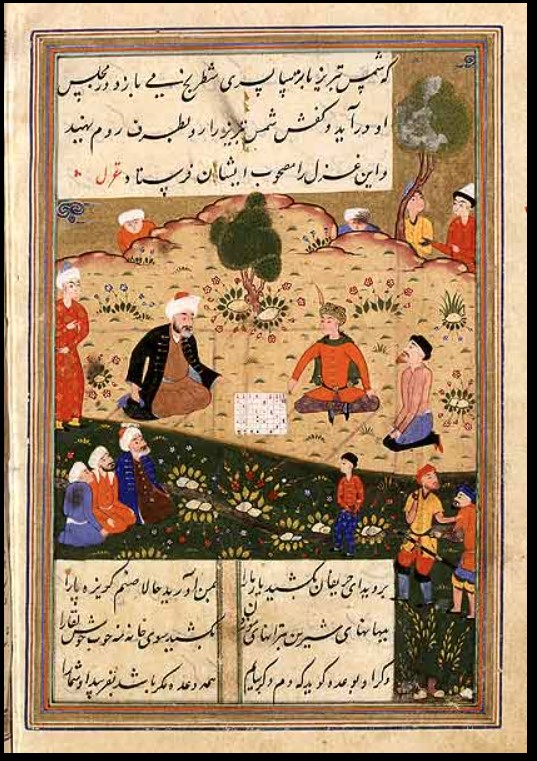
Divan Attar
Attar, also known as Farid ud-Din Attar, was a renowned Persian poet and Sufi mystic who lived during the 12th century. Born in Nishapur, in present-day Iran, Attar’s life and work are shrouded in mystery, and many details about his personal life remain unknown. He is best known for his masterpiece, “The Conference of the Birds” (Mantiq al-Tayr), an epic Sufi poem that has become a classic of Persian literature. In addition to “The Conference of the Birds,” Attar wrote several other significant works, including
– Dīwān (دیوان) – Asrār-Nāma (اسرارنامه)
– Muṣībat-Nāma (مصیبتنامه)
– Ilāhī-Nāma (الهینامه)
– Jawāhir-Nāma (جواهرنامه)
– Šarḥ al-Qalb[18] (شرحالقلب)
In this series, The Diwan is divided into three books:
Book-01: Ghazal 1 to Ghazal 284
Book-02: Ghazal 285 to Ghazal 568
Book-03: Ghazal 569 to Ghazal 852
هدف این کار، ترجمه تمامی شعرهای عطار به شیوه خط به خط است ( متن فارسی و در کنار ان همان خط به انگلسی) که نسل جوان ایرانی نمی توانند شعرهای فارسی اصیل را بخواند، بتواند آن را بخوانند و کم کم تشویق به یاد گرفتن زبان فارسی را بشوند.
بس که دل تشنه سوخت وز لبت آبی نیافت
مست می عشق شد و از تو شرابی نیافت
The thirsty heart burned, yet found no water from your lips
Intoxicated by the wine of love, yet found no wine from you
The object of this work is to translate all the poems of Attar , line by line so that the young generation of Persians unable to read the original Farsi can read them and encourage them to learn Farsi.
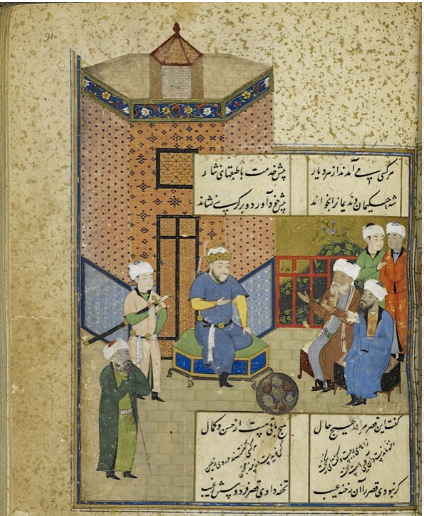
Khayyam
هفتاد و دو سال فکر کردم شب و روز معلومم شد که هیچ معلوم نشد
Seventy-two years I pondered day and night, I realized that nothing became clear.
Edward FitzGerald was a British poet and writer known for his renowned work, “The Rubaiyat of Omar Khayyam” FitzGerald’s most significant literary achievement was his translation and interpretation of the quatrains (rubaiyat) attributed to the Persian poet and philosopher Omar Khayyam. This book is divided into two parts:
- The Rubaiyat of Omar Khayyam.
- The Rubaiyat of Edward FitzGerald (inspired by Khayyam).
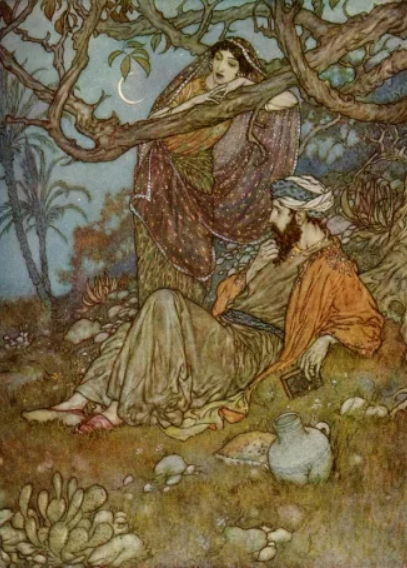
Sadegh Hedayat - Boof Koor
Hedayat is most renowned for his novella “The Blind Owl” (1937), which is considered a masterpiece of Persian literature. The novella combines elements of surrealism, symbolism, and psychological horror to depict the narrator’s descent into madness and his exploration of the dark corners of the human psyche. “The Blind Owl” is often interpreted as a reflection of Hedayat’s own struggles with depression and alienation.
Throughout his works, Hedayat demonstrated a fascination with themes of death, solitude, and the absurdity of existence. He was deeply influenced by Western writers such as Edgar Allan Poe and Franz Kafka, as well as Eastern mysticism and folklore. His writing style is characterized by its vivid imagery, introspection, and exploration of the boundary between reality and imagination.
در زندگی زخمهایی هست که مثل خوره در انزوا روح را آهسته می خورد و می تراشد
In life, there are wounds that slowly devour and carve the soul,
like a worm in seclusion
